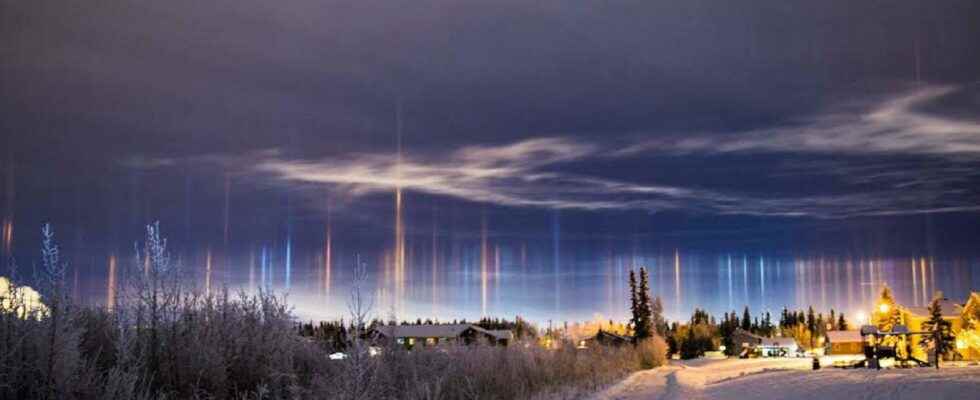You will also be interested
[EN VIDÉO] The growth of snowflakes, a mesmerizing spectacle! Welcome to the world of snow. Discover the growth of snowflakes seen under the microscope and in time-lapse. Images full of poetry that tell us about the formation of snowflakes, almost always in a star with six symmetrical branches. And no two are the same.
The pillars of lights (light pillarsn English) are a meteorological phenomenon that is part of the family of solar halos. It is possible to see them every winter in the polar regions, in Canada, in the north of the United States (Montana, Alaska, Great Lakes region), but also in Russia, as well as in the east and north of Europe (Scandinavia, Poland…). Pillars of light have also sometimes been seen in France, mainly in the Alps, even if they are less impressive than in the north of the European and American continents.
A special kind of ice crystals needed
Pillars of light occur when certain specific conditions are met in the lower layers of the atmosphere. In the polar regions, thin ice crystals float suspended in theair : it can be very fine snow, or simply very fine clouds, of the cloudy veil type, such as cirrus clouds. Their formation then requires the presence of a particular type of ice crystals floating near the ground, and under calm weather conditions, without any wind: particular crystals are necessary, in the shape of a hexagon, which form under freezing temperatures. , more particularly between -8 and -25°C. The ideal temperature is -12 to -16°C. These hexagon-shaped crystals are very flat and reflect the light of the Sun or the moon : they then act like small mirrors.
To see these pillars appear, you need another artificial light source: lampposts, lighted buildings, headlights of cars. The pillars then take the color from their original source, hence the fact that they may display different colors. They usually form when the sun is very low, just before the sunset, but also throughout the night. The greater the concentration of ice crystals in the atmosphere, the bigger and brighter the pillars of light. It is quite possible to predict the conditions weather report ideal for the formation of ice pillars (temperature, low wind, humidity in the air), but much more difficult to predict the type of ice crystals (hexagon) necessary for the formation of the phenomenon.
Pillars of light that “move”?
Surprisingly, depending on our position, we do not necessarily see the source of the phenomenon on the ground (in general, street lamps) and this may suggest that these pillars come from the sky. There can also be a mismatch between the pillar and its light source on the ground: the pillar does not necessarily appear exactly above its light source, but on one side, or even completely detached, in the air , with a large space between the pillar and its source. Some of these pillars may even flicker or appear to move slightly. This is why many observers believe they are witnessing a paranormal apparition! The phenomenon generally lasts from a few seconds to a few minutes, at most ten minutes.
Interested in what you just read?
